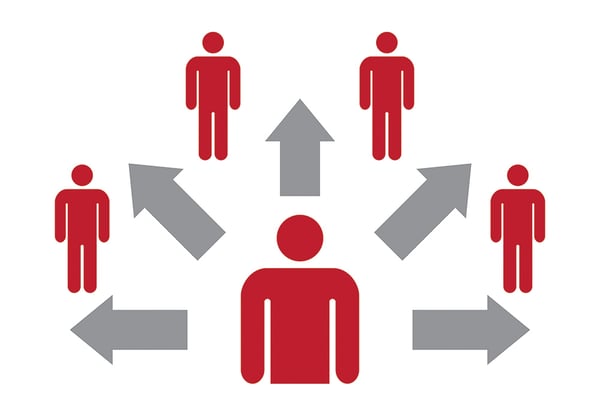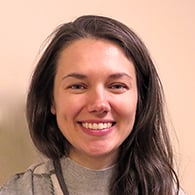Published: July 3, 2020
 Flattening the curve. Shelter-in-place. Social distancing.
Flattening the curve. Shelter-in-place. Social distancing.
Terms like these are not new in the medical research sphere, but since COVID-19 words like these have entered the lexicon of the general public (and yes dictionaries have taken note).
Today, let’s talk about contact tracing, a term that has been used by health departments for nearly a century. It is “the practice of identifying and monitoring individuals who may have had contact with an infectious person as a means of controlling the spread of a communicable disease.”
Here are 6 things you need to know about contact tracing.
Who does contact tracing?
“Contact tracing is used by health departments to prevent the spread of infectious disease. In general, contact tracing involves identifying people who have an infectious disease (cases) and their contacts (people who may have been exposed) and working with them to interrupt disease transmission,” according to the Centers for Disease Control and Prevention (CDC).
How does tracing work?
People diagnosed with COVID-19 are interviewed by the local health department to identify everyone they had close contact with during the time they may have been infectious. The contact tracer then contacts those people usually within one business day by phone to advise them of their potential exposure and encourage them to self-quarantine at home for 14 days, take their temperature twice a day and monitor for COVID-19 symptoms. The infected person is told to isolate, which means staying at home in a “sick room” or area, until they have recovered.
Who is considered a “close contact?”
A close contact is defined as anyone who was within 6 feet of an infected person for at least 15 minutes starting from 48 hours before the person began feeling sick until the time the patient was isolated. This includes people who were wearing a face covering, which is meant to prevent someone from transmitting the disease and not to protect someone from becoming infected.
How do I know the contact caller is legit?
Good question. According to the Ohio Department of Health “scammers posing as contact tracers have been preying on Ohioans. Legitimate contact tracers will initially reach out by phone and will never ask for your Social Security number, your bank account number or any other financial information. NEVER click on a link or respond to a text saying you have been exposed to COVID-19.” If you are unsure or concerned by a call contact your local health department
Is the name of the infected person shared with the contacts?
Patient confidentiality is maintained at all times. The contact tracer will only tell close contacts they might have been exposed to COVID-19, but not by whom. “They are ethically and, in most states, legally bound to protect the information and use it only for public health purposes," said Lisa Lee, director of scholarly integrity and research compliance at Virginia Tech.
Are people required to talk to a contact tracer?
Participation is voluntary for both infected people and those identified as close contacts, though some communities have taken legal action over public safety concerns. Public health professionals urge people to talk with health officials and self-quarantine or isolate because contact tracing is a highly effective tool to slow and stop the spread of COVID-19.
Kendal’s Plan for Contact Tracing
Because older adults are the most vulnerable population for becoming seriously ill or dying from COVID-19, life plan communities such as Kendal at Oberlin have implemented many proactive measures to protect residents.
Kendal closed the campus to visitors in mid-March and residents were not permitted to leave. Now residents can leave for essential medical appointments and other limited trips using a “pass” system that will assist with contact tracing if and when needed.
Kendal staff track the resident’s destination, day and time of trip so if Kendal is contacted by a doctor’s office or Lorain County Public Health about an infected person in the county they will have a record of any resident who might have been in close contact and should self-quarantine.
Crystal Watson, a senior scholar with the Johns Hopkins Center for Health Security, says contact tracing “is the best tool we have to manage this in an ongoing way and allow our economy to open up again."
She estimates that the United States will need at least 100,000 workers trained in contact tracing across the nation, at a bare minimum, to keep COVID-19 at a manageable level.
Plan a Virtual Visit to Kendal at Oberlin
 Looking for a vibrant retirement living community that fits your future living plans? Schedule a "Walk and Talk" virtual tour with Elisabeth today.
Looking for a vibrant retirement living community that fits your future living plans? Schedule a "Walk and Talk" virtual tour with Elisabeth today.
 In the past, Molly Kavanaugh frequently wrote about Kendal at Oberlin for the Cleveland Plain Dealer, where she was a reporter for 16 years. Now we are happy to have her writing for the Kendal at Oberlin Community.
In the past, Molly Kavanaugh frequently wrote about Kendal at Oberlin for the Cleveland Plain Dealer, where she was a reporter for 16 years. Now we are happy to have her writing for the Kendal at Oberlin Community.




